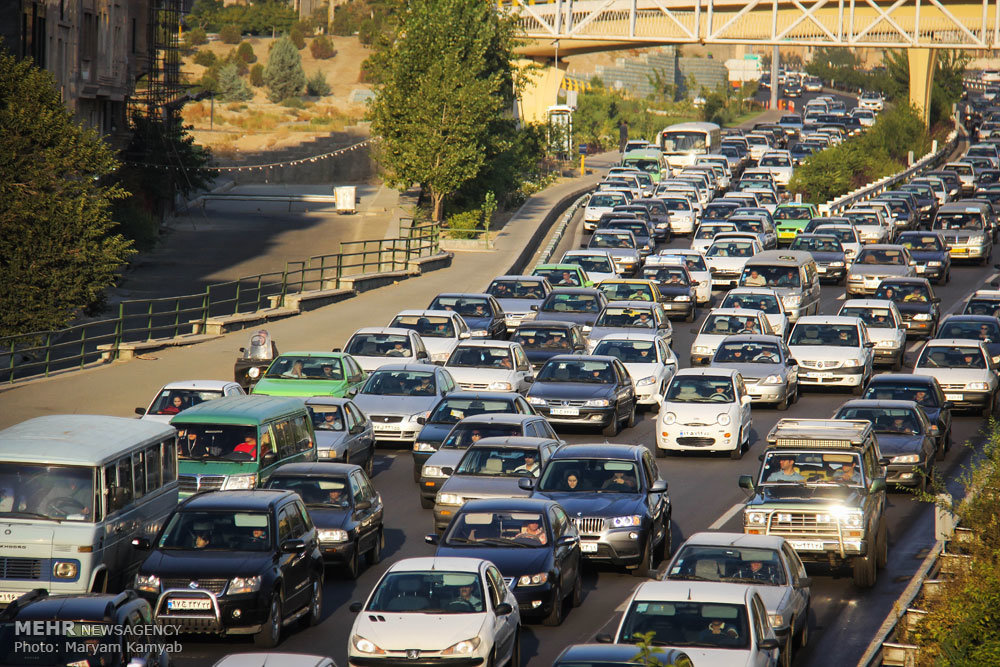‘TOD only way for Tehran to survive air pollution’

TEHRAN – While some experts believe that Transit-Oriented Development (TOD) in the metropolis of Tehran is being carried out based on no proper principles and will not be effective, secretary of the TOD committee of Tehran City Council has announced that TOD can be properly implemented in the capital and mitigate air pollution.
Tehrani citizens have described traffic and air pollution as the two main problems challenging them, ISNA quoted Afshin Khezrloo as saying on Friday citing results of a survey.
The fact is that the traffic congestion cannot be eradicated by optimizing traffic light control and coordination system, increasing passageways, building bridges and tunnels, implementing transportation projects, he noted, adding, so that there must be an efficient solution, through which vehicle use is reduced and public transport is promoted.
Lamenting that over 12 million liters of petrol is consumed daily in the Iranian capital, which costs 120 trillion rials (about $2.9 billion) per year, he noted that some 40 trillion rials (about $950 million) of which is partially paid by the residents, and over 80 trillion rials (nearly $1.9 billion) paid by the government.
He went on to add that in fact it costs half of the municipality’s budget and ten times more than the Department of Environment (DOE) budget for protecting the environment and mitigating air pollution.
Meanwhile, Tehran is among the top 10 metropolises in the world, which inflicts the most time consuming traffic on its citizens, while 4,500 people annually lose their lives due to air pollution, he regretted.
He explained that apart from inappropriate culture and social behavior among the residents, poor land use change policies and not employing sustainable transport infrastructure, has exacerbated the capital’s condition.
To eradicated automobile-based cities, a determined law enforcement is required along with serious implementation of public transport development policies, he highlighted.
If transport planning and urban development is considered as two main factors in urban planning, then cities will not inefficiently develop, he said, adding that human-centered urban development is a solution for Tehran to survive from surrounding polluting vehicles.
Referring to TOD as an infrastructure reform making the public transportation system more efficient, he said that through TOD and only with infrastructure improvements, the city can be free of numerous cars moving and emitting particles.
TOD encourages the citizens to use the high quality public transport system rather than private cars, he said, adding, to do so, there must be public transport stations all over the city with few distance.
Constructing residential and business units around high-speed transport stations, is another major method of TOD, which ensures that all residents and employees have access to a high quality public transportation system, the density of the residential units is at least 140 houses per hectare.
Accordingly, there must be appropriate pathways and bicycles lanes, which facilitates access to services and public transport, he also added.
He went on to say that restrictions and prohibitions should be imposed on car parking along the sidewalks or entering certain passages and fines must be adopted in some cases.
Moreover, pathways and green spaces must be enhanced for pedestrians, as walking can help living a healthy life, he further noted.
If we consider 300 TOD zones for Tehran, the total cost is 45 trillion rials (about $1.1 billion), he concluded.
According to tod.org transport oriented development or as it is well-known TOD is the creation of compact, walkable, pedestrian-oriented, mixed-use communities centered on high quality train systems. This makes it possible to live a lower-stress life without complete dependence on a car for mobility and survival.
TOD can be an optimal solution to the complicated, pressing problem of climate change and global energy security by creating communities which greatly minimize the need for driving and energy consumption. This type of living arrangement can reduce driving by up to 85%.
Components of TOD includes walkable design with pedestrian, train station as prominent feature of town center, regional node containing a mixture of uses in close proximity (office, residential, retail, civic), large ride-in bicycle parking areas within stations and collector support transit systems including streetcar, light rail, and buses, etc.
Higher quality of life with better places to live, work, and play, reduced traffic congestion, car accidents and injuries, healthier lifestyle with more walking, and less stress, reduced dependence on oil, reduced pollution and environmental damages are among the benefits of TOD.
FB/MG
